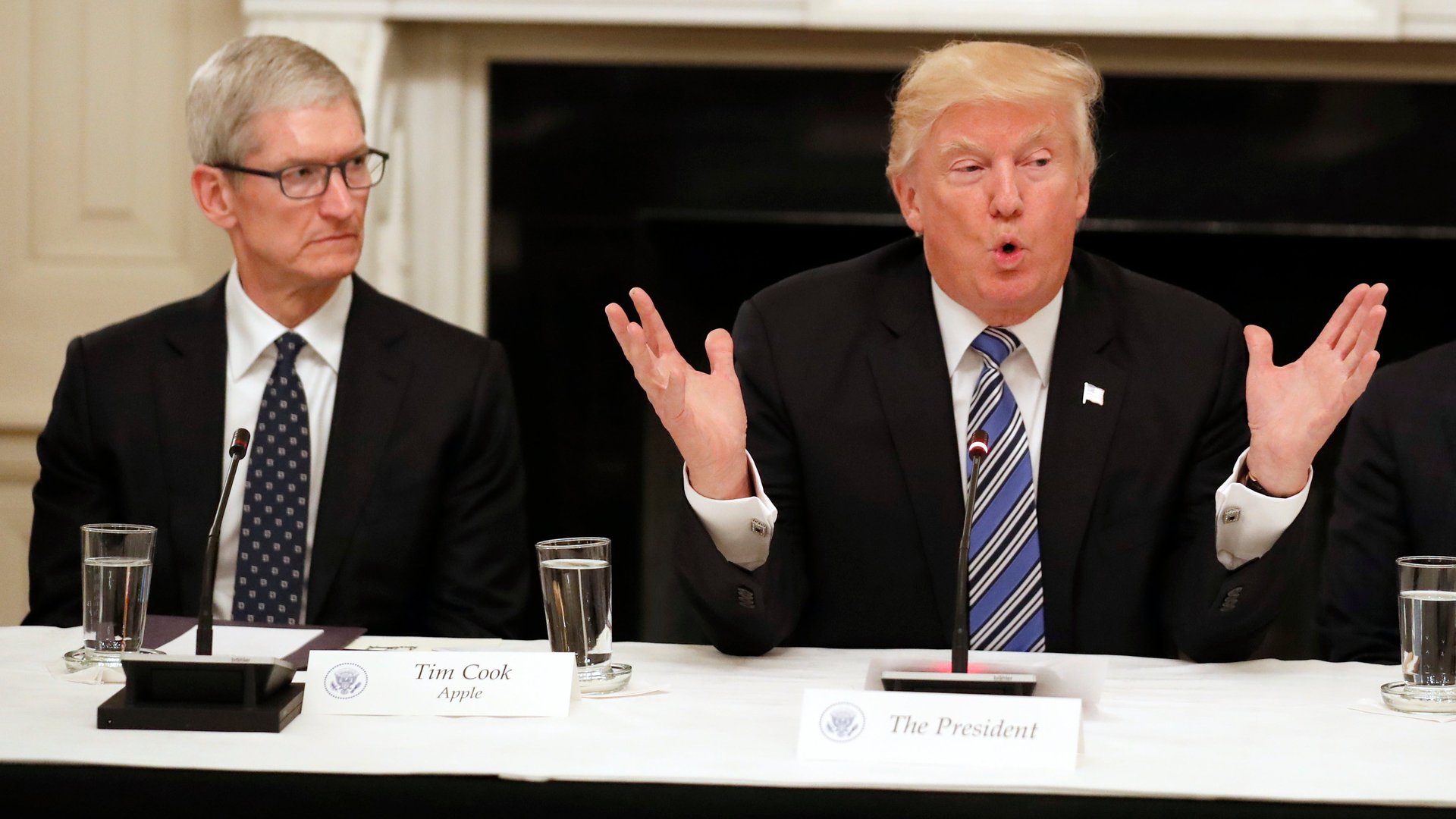Tim Cook offered a master class in avoiding a Trump-related question
Sometimes it’s difficult to know how to answer a question about whether something Donald Trump said was accurate, as there’s been more than a few misstatements during his short tenure as US president.


Sometimes it’s difficult to know how to answer a question about whether something Donald Trump said was accurate, as there’s been more than a few misstatements during his short tenure as US president.
But on Apple’s earnings call today, CEO Tim Cook was asked point-blank by analyst Steve Milunovich at UBS whether Apple intends to build three factories in the US, as Trump suggested it would on July 25:
First of all, the President suggested that you may build three big beautiful plants. I wonder if you can comment on that if that’s a possibility either directly or indirectly.
Cook starts off by getting to the reason Trump has harped on about bringing manufacturing back to the US—to fulfill the president’s stump speeches about returning more low-skill jobs to the US. Instead of just answering yes or no, Cook says:
Let me just take this question from what are we doing to increase jobs, which I think is probably where it’s rooted. We have created 2 million jobs in the US, and we’re incredibly proud of that. We do view that we have a responsibility in the US to increase economic activity including increasing jobs. Because Apple could have only been created here. And so as we look at the 2 million, there are three main categories of that, and we have actions going on in each of them to further build on that momentum.
Cook then breaks down ways that it’s investing in the US, none of which directly have to do with the question at hand, but do show how Apple is trying to create jobs (or at least help future workers get the right skills) in the US:
The first category is app development. About three-quarters of the 2 million are app developers. And we’re doing an enormous amount of things to deliver curriculum to both K-12 with Swift playgrounds in the K-6 area, other curriculum as you proceed beyond grade 6 under the “Everyone Can Code” area, and just a couple months ago, we announced a new curriculum that’s focused on community schools and community colleges, junior colleges, technical colleges, for kids that do not have coding in their elementary and high school years. And so we’re very excited about that because we think it could increase the diversity of the developer community and the quantity, and I think this area in general and all the things we do for the developer community will be the largest contribution that Apple can make, because this is the fastest growing job segment in the country. And I think will be for quite some time.
Cook continues explaining that it also spends heavily on products from US companies, which in good, old-fashioned Reaganomics, would trickle down to more jobs at US companies:
If you look at the second area, we have purchased—or we purchased last year about $50 billion worth of goods and services from US-based suppliers. Some significant portion of those are manufacturing-related, and so we ask ourselves what can we do to increase this. And you may have seen that at the beginning of the quarter, in April, I believe, we announced a fund, an advanced manufacturing fund, that we’re initially placing $1 billion in, and we have already deployed $200 million of that. The first recipient is [iPhone screen-maker] Corning in Kentucky, and they’ll be using that money to expand the plant to make very innovative glass. And we have purchased that glass and essentially export it to the world with iPhones and iPads. We think there is more of these that we can do. I think there’s probably several plants that can benefit from having some investment to grow or expand or even maybe set up shop in the US for the first time. So we’re very excited about that.
His second answer hinted at the plant that Foxconn, the Taiwanese company that assembles products for Apple, announced this week that it plans to build in Wisconsin. His final point was a cryptic note that could potentially signify Apple plans to shift some more jobs back to the US in the near future, but it seems unlikely that would require building three new factories—especially on top of the $5 billion headquarters its still hasn’t quite finished:
And then the third area is we have about two-thirds or so of our total employee base is in the US, despite only a third of our revenues being here, and we’ll have some things that we’ll say about that later in the year. And so that’s what we’re doing from a job growth point of view, and we’re very, very proud of that.
Cook’s winding answer didn’t rule out the possibility that Apple plans to open new facilities in the future, but as the Wall Street Journal suggested on its liveblog of today’s earnings: “I can’t help but wonder whether Cook said to Trump something like: We plan to make three big investments in U.S. manufacturing plants. But Trump took ‘invest’ for ‘build,’ or such.”